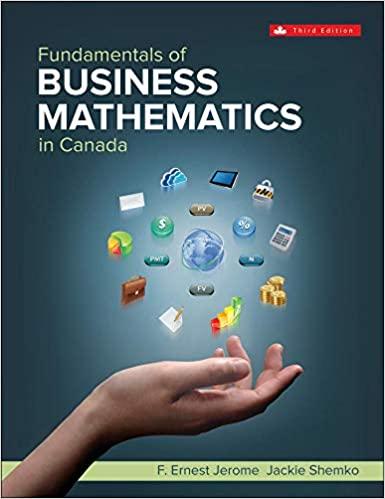Question
You have a drawer that contains 50 coins. 10 coins have probability p = 0.3 of heads, 30 coins have probability p = 0.5 and
You have a drawer that contains 50 coins. 10 coins have probability p = 0.3 of heads, 30 coins have probability p = 0.5 and 10 coins have probability p = 0.7. You pick one coin at random from the drawer and flip it. (a) What are the (prior) odds you chose a 0.3 coin? A 0.7 coin? HINT: First calculate the probability P(H0.5) and then apply the formula to calculate odds: odds = P(H0.5) 1 P(H0.5) . (b) What are the (prior) odds of flipping a heads? HINT: First calculate the prior probability of tails from the Bayesian Update table. It is the sum in the column of the Bayes numerator. (c) Suppose the flip lands heads. (i) What are the posterior odds the coin is a 0.7 coin? (ii) A 0.5 coin? HINT: From the Bayesian Update table "read" the corresponding posterior probabilities. (d) What are the posterior predictive odds of heads on the next (second) flip? HINT: Use the law of total probability with insertions from the posterior probability and the likelihood.
Step by Step Solution
There are 3 Steps involved in it
Step: 1

Get Instant Access to Expert-Tailored Solutions
See step-by-step solutions with expert insights and AI powered tools for academic success
Step: 2

Step: 3

Ace Your Homework with AI
Get the answers you need in no time with our AI-driven, step-by-step assistance
Get Started


